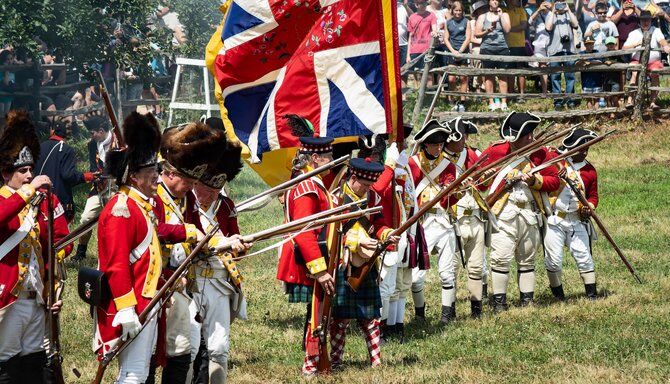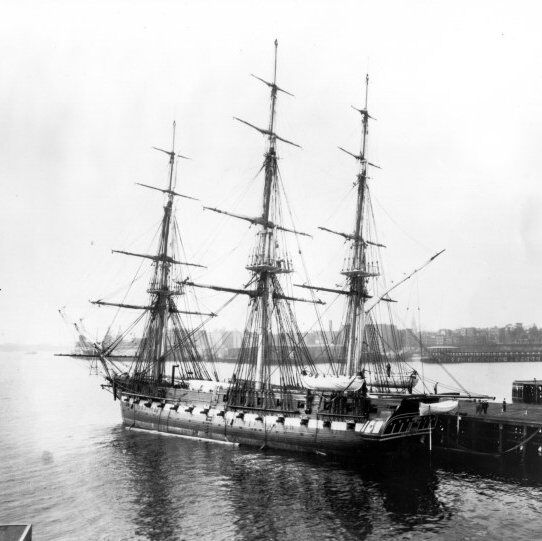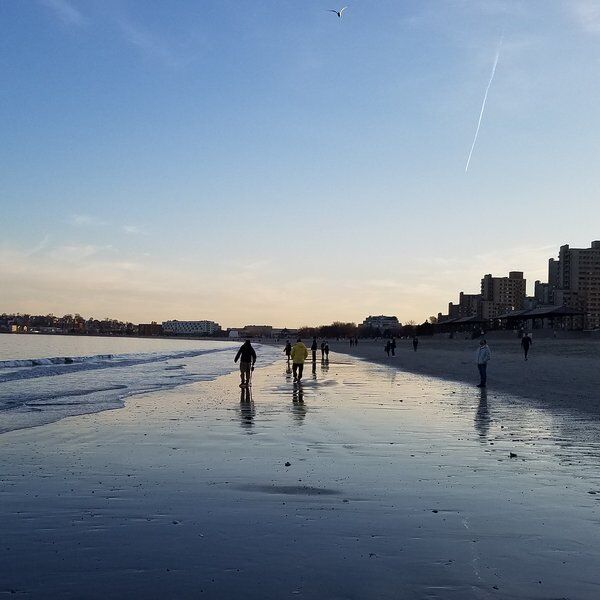The Boston Massacre Site: A Landmark for Reflection
The Boston Massacre Site, in downtown Boston, is a solemn reminder of a significant event that ignited the flames of revolution in colonial America. This hallowed ground marks the location where, on the evening of March 5, 1770, a clash between British soldiers and American colonists escalated into a fatal event that ultimately set America on its path towards independence. Today, the Boston Massacre Site serves as a poignant historic landmark, inviting visitors to reflect upon the sacrifices and struggles that shaped the nation.
Having been moved twice, the Boston Massacre Site, is now positioned along the Freedom Trail. The Freedom Trail is a route connecting 16 significant landmarks, which paved the way for American Independence, across the city. The site lies at the intersection of State and Congress Streets in Downtown Boston, metres from where the massacre occurred. Beneath the Old State House balcony, the Boston Massacre Site is marked by a circle of granite pavers and is a great first step for visitors exploring America’s revolutionary history. From this point annually, reenactments take place led by the Bostonian Society.

The Boston Massacre: The Building of Tensions
Even before the Boston Massacre, or the Incident on King Street as it was also known, tensions were running high in the region. For years the colonists were blighted by British officials, often coming into conflict, and the number of people who were unemployed and living in poverty, was on the rise. With this in mind, the Boston Massacre seemed inevitable. Especially as Boston was a hotbed of revolutionary ideas and independent sentiments.
As a means to recoup some of the expenses lost during the defence of their North American colonies, the British government imposed harsh taxes under the Townsend Act, in 1767. Understandably, in a place with an already difficult economic situation, colonists across Massachusettes began to act out against British rule. In October 1768, troops from the 14th and 29th regiments of the British army were dispatched to Boston to maintain order and ensure the colonists continued to pay their taxes. Taxes that were vital to keep British revenues ticking over.
Unfortunately, the introduction of troops further increased tensions in a place already on the brink of an uprising. In the two years that followed Boston was transformed into a place of British military occupation. Not surprisingly, skirmishes broke out across the city, with young men harassing the British soldiers. Until ultimately, they fought back!
The Incident that Shook the Colonies
On the evening of March 5th 1770, against the backdrop of these rising tensions, one such skirmish had fatal consequences for five colonists. What began as a brawl outside Customs House – with American colonists terrorising a lone British soldier, Private Hugh White – quickly escalated into a brutal public slaughter. Or at least that was the widespread message from leading patriots such as Paul Revere and Samuel Adams; a motion that spurred the American Revolution into existence.
So what exactly happened? After learning from a British sympathiser that the lone sentry was in need of support, Captain Thomas Preston led seven additional soldiers to his aid. The protesters, emboldened by the knowledge that the Riot Act had yet to be read – legally the soldiers could not fire until it had, and then only if they failed to dissipate after one hour – pelted the soldiers with ice, snow, clubs, and stones.
After much jostling, and probably out of fear, one soldier eventually fired into the crowd. This prompted several others to fire as well, acting on the assumption that the first had been given the order to fire. However, there had been no command issued from Preston. Almost instantly three colonists were killed and a further eight were wounded – two of whom died of their injuries at a later date.
The Aftermath of the Boston Massacre
“None of them was a hero. The victims were troublemakers who got more than they deserved. The soldiers were professionals…who shouldn’t have panicked. The whole thing shouldn’t have happened.”
Following the shooting, Lieutenant Governor Thomas Hutchinson arrived on the scene and dismissed the soldiers. Then, from the balcony of the Old State House, Hutchinson assured the crowd that justice would be done.
The Boston Massacre Trials
By the next morning the eight soldiers were arrested and a meeting – held to assess the situation – produced a high demand for the removal of all British troops. By March 11th both regiments were disbanded and restationed in Castle William in Boston Harbour. If they weren’t removed it was believed that they would be overcome by the colonists.
“[The British troops] would probably be destroyed by the people – should it be called rebellion, should it incur the loss of our charter, or be the consequence what it would."

In order not to incur a retaliation by the British, the colonists arranged for a fair trial of the arrested soldiers. Future Founding Father and US President, John Adams, even formed part of the defence team. The trials were split into two; one for Preston and one for the men he commanded. Adams argued that amongst the chaos and uncertainty, no one could be sure who, if anyone, had given a command to fire.
Given the chaos and uncertainty of the moment, as opposed to any premeditated malice, Adams won acquittal for all but two of the men. This included Preson. For the men who were charged, Adams managed to get their sentences down to manslaughter and their punishment; branding of their hands. Adams later claimed though that the “foundation of American independence was laid” that fateful day of the Boston Massacre.
“Judgment of Death against those Soldiers would have been as foul a Stain upon this Country as the Executions of the Quakers or Witches, anciently. As the Evidence was, the Verdict of the Jury was exactly right. This however is no Reason why the Town should not call the Action of that Night a Massacre, nor is it any Argument in favour of the Governor or Minister, who caused them to be sent here. But it is the strongest Proofs of the Danger of Standing Armies.”
Crispus Attucks and the Other Victims
Dock Worker Crispus Attucks, of African and Indigenous descent, was the first killed at the Boston Massacre. Despite being one of the most important characters in the American Revolution, very little is actually known about Attucks. Local newspapers eulogised him though as a martyr of British tyranny, fueling the fires of the subsequent revolution.
Alongside Attucks, the other victims of March 5th were ropemaker Samuel Gray, sailor James Caldwell, Samuel Maverick, a 17 year old apprentice ivory turner, and Irish immigrant Patrick Carr. The victim’s funerals were arranged by the Sons of Liberty, and their deaths used as propaganda by Paul Revere and Samuel Adams.
The Media Battle and the Winds of Change
British loyalists tried to claim that the “Bloody Massacre in King’s Street” – as characterised by Samuel Adams – was merely a response to the aggression from the crowd. However, the narrative initiated by Revere and Adams proved more popular. Revere, a silversmith and engraver, copied an image by Henry Pelham (and is now widely celebrated as being its creator) and had it published in the Boston Gazette. The image contained highly graphic details and served as an effective anti-British editorial, motioning in a season of change. Today it is still used to represent that sad March day in Boston’s history.

The Boston Massacre Site: A Place of Commemoration
Preserving History and Commemoration
Efforts to preserve and commemorate the Boston Massacre Site have been ongoing for centuries. In 1888, a majestic Boston Massacre Monument designed by Adolph Robert Kraus, was erected to honor the victims. The monument bears the names of the five men who lost their lives and serves as a lasting testament to their sacrifice. The site continues to be a focal point for ceremonies, memorials, and public gatherings that honor the memory of those who fought for freedom. It is also often referred to as the Crispus Attucks Monument.
Communal Reflection and Education
Visiting the Boston Massacre Site offers an opportunity for both reflection and education. The site's significance is commemorated through a combination of historical markers, interpretive displays, and guided tours. These resources provide insights into the events leading up to the Boston Massacre, the key figures involved, and the aftermath that reverberated throughout the colonies. Visitors can gain a deeper understanding of the complexities and ideologies that led to the American Revolutionary War. As we all know, there were other mitigating factors such as the Boston Tea Party and the Stamp Act.
The Granary Burying Ground
Adjacent to the Boston Massacre Site, the Granary Burying Ground is a historic cemetery dating back to 1660. This serene cemetery serves as the final resting place for the five victims of the Boston Massacre, who were reinterred here in the late 19th century. Several other prominent figures in American history, who are buried here include Paul Revere, John Hancock, and Samuel Adams. A visit to the Boston Massacre Site can be coupled with a stroll through the Granary Burying Ground, providing a poignant reminder of the sacrifices made by those who fought for liberty and independence.
The Relevance of the Boston Massacre Site Today
The significance of the Boston Massacre Site extends far beyond its historical context. It serves as a pivotal reminder of the power of collective action, the quest for justice by Adams, (a man who despite being one of America’s leading patriots, was resolute in his pursuance of a fair trial) and the enduring fight for freedom. The site resonates with contemporary issues and inspires visitors to consider the importance of civil liberties, social justice, and the role of individuals in shaping the course of history. It stands as a symbol of the enduring spirit of resistance and the pursuit of liberty that continues to define American existence.
Our Thoughts…
Visiting the Boston Massacre Site invites reflection, education, and a deeper appreciation for the sacrifices made by those who fought for liberty and independence. It serves as a reminder that the pursuit of justice, freedom, and equality remains an ongoing journey, echoing the timeless call for the preservation of civil rights and the enduring spirit of the American people.
Interested in finding more places like this? Try one of our Boston Scavenger Hunts- untangle cryptic clues as a team, as you are taken on a journey to the most unique, unusual and bizarre corners of Boston and beyond!












